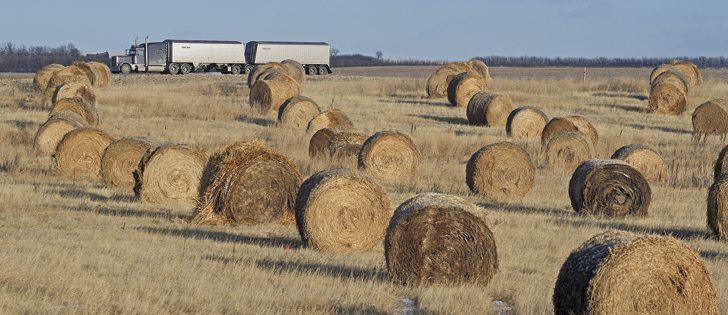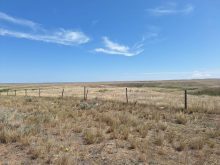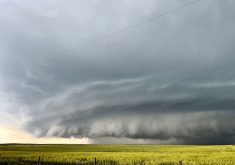Ryan Mercer expects to begin seeding in early April if the warm weather continues.
High temperatures and drying winds have melted the snow and started to suck moisture out of the ground at his Lethbridge-area seed farm.
“I expect it will be an early spring unless things change,” said Mercer.
Temperatures hovering above 10 C have started thawing the ground and drying the fields.
The warm weather has also made it easier on crews cleaning seed 24 hours a day since Christmas.
“It makes that job easier,” said Mercer.
Read Also

Bunge’s crop mix is changing
Bunge has predominantly been a soybean processing firm, but that’s about to change after the merger with Viterra with softseed processing and grain merchandising gaining ground.
The softening ground and the lack of snow may sound like a bonus for livestock producers, but Graeme Finn said it has made it tougher to swath graze his cattle.
With no snow cover, the cattle “nit pick” through the swaths, taking the best bits, dragging the straw between swaths and pounding it into the soft ground.
“They don’t need as much feed, but they go through more because they drag it around,” said Finn, who farms near Crossfield, Alta.
Finn did unplug the electricity to his insulated water trough because the weather always seems to be above freezing at night.
David Phillips, a senior climatologist with Environment Canada, said the winter hasn’t broken many records for extreme high or low temperatures, but it will go down in the record book as being mild.
“It has been exceptionally mild in its duration. Every month has been mild,” said Phillips.
“What has been the situation is it has been remarkably consistent. We had a couple days around Christmas that got cold, but we’re talking here about two or three days, not two or three months of brutal temperatures.”
Feb. 9 may go down as one of the nicest days of the winter. The temperature in Calgary was above 16 C and Edmonton reached 9 C. Temperatures reached 20 C in Milk River, Alta., while Regina reached 9 C.
“We certainly have seen some temperatures that would be more typical in late April or May than mid- February,” Phillips said.
“The thing that surprises me is the duration of these warm bouts. Typically, warm air doesn’t have a chance in the Prairies in February and it can be a one-day wonder.”
He said it may sound like “gobbledygook,” but what stands out are not that it has been so warm but it hasn’t been cold.
Prairies temperatures should usually be -7 C during the day and drop to -18 or -20 at night, but this year there haven’t been extreme temperatures at night or during the day.
Areas like Grande Prairie or Edmonton should have eight or nine days where the temperature drops to -30 C, but there have been none this year.
“In Medicine Hat or Calgary, there have been only four days below – 20. Normally they would have had 17 of those suckers,” Phillips said Feb. 12.
The reason for the mild weather is no secret. El Nino, a warm band of ocean water in the Pacific Ocean, has created weather havoc for the past year.
On the Prairies, a lack of snow can be blamed on El Nino and have farmers concerned about a lack of spring moisture.
Phillips said no one should write an obituary for winter yet.
Southern Alberta receives half of its annual snowfall after February.
“I often say to Calgarians, your winter is over, but your snow season is about to begin,” he said.
“The lack of precipitation is a concern to some growers, but you don’t lose your crop in February. A good soaking, percolating spring rain can erase any of the shortfalls of precipitation.”















